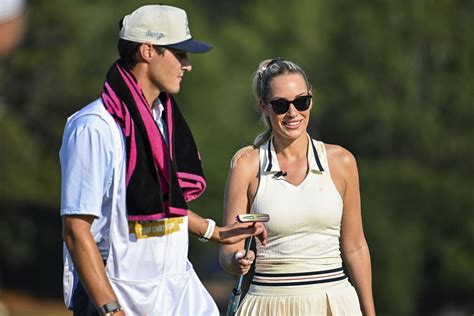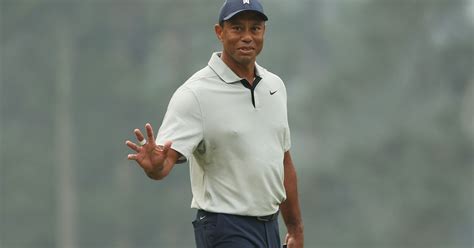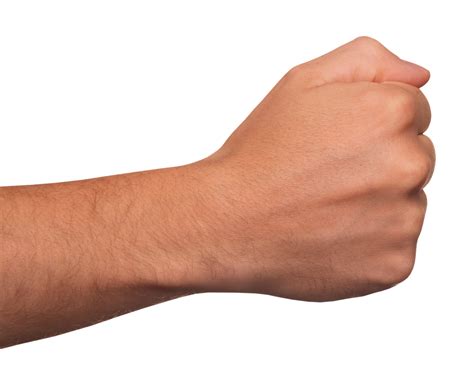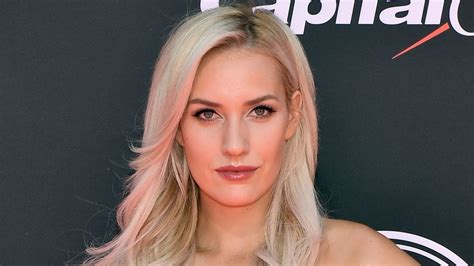
Paige Spiranac humorously suggested that wearing less clothing on the golf course might improve one’s game, a remark she made following a less-than-stellar performance during a recent round.
Former professional golfer and social media personality Paige Spiranac, known for her engaging online presence and sometimes provocative commentary on the sport, jokingly attributed her recent struggles on the golf course to wearing too much clothing. The comment, delivered with her characteristic wit, came after she expressed frustration with her performance. While Spiranac’s remark was lighthearted, it sparked a conversation about the pressures and expectations placed on female athletes and influencers in the golf world.
Spiranac, who has amassed a large following across various social media platforms, often uses her platform to address issues related to golf, including course accessibility, body image, and gender inequality. Her recent comment, though seemingly flippant, touches upon the broader topic of how female golfers, especially those with a strong online presence, are often scrutinized for their appearance and clothing choices. This scrutiny can sometimes overshadow their athletic abilities and accomplishments.
“Sometimes I play better when I am wearing less,” Spiranac quipped, hinting that perhaps restrictive clothing hindered her swing and overall performance. Her statement was made in a context of self-deprecating humor, but many followers took to social media to discuss the implications of her words within the larger discussion of women’s golf attire and perceptions.
Spiranac’s career trajectory has been unique. After a promising junior and collegiate golf career, injuries sidelined her professional aspirations. She then transitioned to social media, where she quickly gained popularity for her golf tips, course reviews, and candid insights into the sport. Her success has not been without controversy, as she has faced criticism for her sometimes revealing attire and perceived exploitation of her image. However, she has also garnered praise for challenging traditional norms and promoting a more inclusive and diverse golf culture.
The debate surrounding women’s golf attire is not new. For years, female golfers have faced stricter dress codes compared to their male counterparts. These codes often dictate the length of skirts, the types of tops allowed, and even the wearing of leggings. Critics argue that these rules are outdated and sexist, placing undue emphasis on appearance rather than athletic performance. In recent years, there has been a growing movement to relax these restrictions, allowing female golfers to wear more comfortable and practical clothing.
Spiranac has been a vocal advocate for these changes, arguing that golfers should be judged on their skills, not their outfits. She has also spoken out against the sexualization of female athletes, emphasizing the importance of respecting their talent and dedication. Her willingness to address these issues has made her a polarizing figure, but it has also solidified her position as a leading voice in the golf community.
While Spiranac’s “less clothes” theory was delivered in jest, it underscores the complex relationship between appearance, performance, and perception in women’s sports. It serves as a reminder that female athletes often face a unique set of challenges, navigating both the demands of their sport and the pressures of societal expectations. Her comment has sparked a wider conversation about the balance between personal expression, professionalism, and athletic achievement in the world of golf and beyond.
Paige Spiranac: A Deeper Dive into Golf, Image, and Influence
Paige Spiranac’s journey from aspiring professional golfer to social media sensation is a testament to her resilience, business acumen, and understanding of the digital landscape. While her initial foray into the golf world was marked by athletic promise, it was her strategic pivot to online content creation that cemented her status as a prominent figure in the sport.
Spiranac’s early life was steeped in athletics. She showed talent in gymnastics before transitioning to golf, where she quickly excelled. Her junior career was impressive, earning her a golf scholarship to the University of Arizona and later to San Diego State University. While her collegiate career was solid, injuries and the intense competition of professional golf presented significant hurdles.
Recognizing the evolving media landscape, Spiranac began leveraging social media to share her golf tips, course reviews, and personal insights. Her engaging personality, combined with her knowledge of the game, quickly attracted a large following. Her Instagram account, in particular, became a hub for her content, showcasing not only her golf skills but also her personal style.
It was this personal style that often drew both praise and criticism. Spiranac frequently posted photos and videos of herself wearing golf attire that some considered revealing or provocative. While her supporters lauded her for challenging traditional norms and promoting body positivity, detractors accused her of exploiting her image for attention and undermining the seriousness of the sport.
Spiranac has consistently defended her choices, arguing that she is simply expressing herself and promoting a more inclusive image of golf. She has also emphasized that her clothing choices do not diminish her knowledge of the game or her passion for the sport. In numerous interviews, she has highlighted the double standards faced by female athletes, who are often judged more harshly on their appearance than their male counterparts.
Her business ventures have further solidified her position as a successful entrepreneur. She has partnered with various golf brands, launched her own line of merchandise, and created subscription-based content platforms. These ventures demonstrate her ability to monetize her online presence and build a sustainable career outside of traditional professional golf.
Spiranac’s influence extends beyond her online platforms. She has become a vocal advocate for issues related to golf, including course accessibility, junior golf programs, and the promotion of diversity and inclusion. She has used her platform to raise awareness and funds for various charitable organizations, demonstrating her commitment to giving back to the community.
However, her path has not been without its challenges. Spiranac has faced online harassment, body shaming, and sexist comments throughout her career. She has spoken openly about the emotional toll of these experiences, emphasizing the importance of mental health and self-care. Despite the negativity, she has remained resilient, using her platform to promote positivity and encourage others to embrace their individuality.
Spiranac’s “less clothes” comment, while delivered in a lighthearted manner, highlights the ongoing debate surrounding women’s attire in sports. It touches upon the broader issue of how female athletes are often judged on their appearance rather than their athletic abilities. By sparking this conversation, Spiranac continues to challenge traditional norms and push for a more inclusive and equitable sports culture.
Her success is a reflection of her talent, hard work, and understanding of the power of social media. She has built a brand that resonates with a wide audience, demonstrating that it is possible to be both a successful athlete and a social media influencer. As she continues to evolve her career, it is likely that she will remain a prominent voice in the golf world, challenging conventions and inspiring others to pursue their passions.
The Evolution of Golf Attire: A Historical Perspective
The history of golf attire is a reflection of societal norms, technological advancements, and evolving ideas about comfort and performance. From the formal attire of the early days of the sport to the more relaxed and athletic styles of today, golf clothing has undergone a significant transformation.
In the 19th century, golf was primarily a sport for the elite, and attire reflected this social status. Men typically wore tweed jackets, woolen trousers, and ties, while women donned long skirts, blouses, and hats. The emphasis was on formality and respectability, rather than practicality or comfort. These early golf outfits were often restrictive and cumbersome, making it difficult for players to swing freely.
As the sport became more popular in the early 20th century, golf attire began to evolve. Men started wearing knickerbockers, which allowed for greater freedom of movement. Women gradually shortened their skirts and adopted more comfortable blouses and sweaters. The introduction of new fabrics, such as cotton and linen, also made golf clothing more breathable and easier to care for.
The mid-20th century saw further changes in golf attire, influenced by the rise of casual wear and the growing popularity of sportswear. Men began wearing collared shirts and golf pants, while women adopted shorter skirts and sleeveless tops. The introduction of synthetic fabrics, such as polyester and nylon, made golf clothing more durable and water-resistant.
In recent decades, golf attire has become increasingly athletic and performance-oriented. Technological advancements have led to the development of moisture-wicking fabrics, breathable designs, and ergonomic fits. Men and women now have access to a wide range of golf clothing options, including polos, shorts, skorts, pants, and outerwear, all designed to enhance comfort and performance on the course.
However, despite these advancements, the debate over appropriate golf attire continues. Traditionalists argue that golf should maintain a certain level of formality and respect for tradition, while progressives advocate for more relaxed and inclusive dress codes. The issue is particularly contentious when it comes to women’s attire, with some arguing that existing dress codes are sexist and discriminatory.
In recent years, there has been a growing movement to relax golf dress codes and allow for greater personal expression. Many golf courses and clubs have updated their policies to allow for more casual attire, such as leggings, athletic shorts, and collarless shirts. This trend reflects a broader shift towards inclusivity and a desire to make golf more accessible to a wider range of people.
Paige Spiranac’s comments on golf attire highlight the ongoing tension between tradition and progress in the sport. While her “less clothes” theory was delivered in jest, it underscores the importance of challenging outdated norms and promoting a more inclusive and equitable golf culture. As golf continues to evolve, it is likely that attire will become even more diverse and reflective of the changing demographics of the sport.
The Impact of Social Media on Golf and Its Personalities
Social media has profoundly transformed the landscape of golf, influencing how the sport is consumed, how golfers interact with fans, and how personalities like Paige Spiranac build their brands. The rise of platforms like Instagram, Twitter, and YouTube has created new opportunities for golfers to connect with a global audience, share their experiences, and monetize their online presence.
One of the most significant impacts of social media on golf is the increased accessibility of the sport. Fans can now follow their favorite golfers in real-time, watch highlights of tournaments, and access exclusive behind-the-scenes content. This increased access has helped to grow the popularity of golf and attract new fans to the sport.
Social media has also empowered golfers to build their personal brands and connect directly with their fans. They can share their thoughts and opinions, showcase their personalities, and engage in conversations with their followers. This direct connection has allowed golfers to cultivate loyal fan bases and build lasting relationships with their audience.
Paige Spiranac is a prime example of how social media can be used to build a successful career in golf. By leveraging platforms like Instagram and YouTube, she has amassed a large following and established herself as a leading voice in the golf community. Her success is a testament to the power of social media to create new opportunities for athletes and personalities.
However, the impact of social media on golf is not without its challenges. The constant scrutiny and pressure to maintain an online presence can take a toll on golfers’ mental health. They also face the risk of online harassment, body shaming, and negative comments from anonymous users.
In addition, social media has blurred the lines between personal and professional lives. Golfers are expected to be active on social media, sharing their thoughts and experiences with the world. This can create a sense of pressure to present a perfect image and avoid making mistakes that could damage their reputation.
Despite these challenges, social media remains a powerful tool for golfers to connect with fans, build their brands, and promote the sport. As social media continues to evolve, it is likely that its impact on golf will only grow stronger.
The Business of Golf: Sponsorships, Endorsements, and Brand Building
The business of golf extends far beyond the greens, encompassing a multi-billion dollar industry fueled by sponsorships, endorsements, and strategic brand building. For professional golfers, securing lucrative partnerships with leading brands is crucial for financial stability and long-term success. Similarly, companies recognize the value of aligning themselves with prominent golfers to enhance their brand image and reach a target audience.
Sponsorships are a cornerstone of the golf business. Companies pay golfers to wear their logos on their clothing, bags, and hats, providing valuable exposure during tournaments and media appearances. These sponsorships can range from small deals with local businesses to multi-million dollar agreements with global corporations.
Endorsements are another important source of revenue for professional golfers. Companies pay golfers to promote their products or services through advertising campaigns, social media posts, and personal appearances. Endorsements can be particularly lucrative for top-ranked golfers who have a strong brand image and a large following.
Brand building is essential for golfers who want to maximize their earning potential. By cultivating a unique and compelling brand, golfers can attract sponsorships, endorsements, and other business opportunities. This involves developing a strong online presence, engaging with fans, and maintaining a positive image.
Paige Spiranac has successfully built a strong personal brand through social media and strategic partnerships. She has leveraged her online presence to attract sponsorships from leading golf brands and launch her own line of merchandise. Her success demonstrates the power of brand building in the modern golf business.
However, the business of golf is not without its challenges. The competition for sponsorships and endorsements is fierce, and golfers must constantly work to maintain their relevance and appeal to sponsors. In addition, the changing media landscape and the rise of social media have created new challenges and opportunities for golfers to build their brands.
Despite these challenges, the business of golf remains a lucrative and dynamic industry. As the sport continues to grow in popularity, the demand for sponsorships, endorsements, and brand building services is likely to increase.
Frequently Asked Questions (FAQ)
1. What was Paige Spiranac’s comment about “less clothes” in relation to golf?
Paige Spiranac jokingly suggested that she sometimes plays better golf when wearing less clothing, a remark made after a less-than-stellar performance on the course. It was delivered with humor and a hint of self-deprecation.
2. What is the context behind Spiranac’s remark, and why did it spark a conversation?
The comment sparked a conversation because it touches on the pressures and expectations placed on female athletes, especially those with a strong online presence, regarding their appearance and clothing choices. It highlights the double standards often faced by women in sports.
3. How did Paige Spiranac transition from a professional golfer to a social media personality?
After a promising junior and collegiate golf career, injuries hindered Spiranac’s professional aspirations. She then transitioned to social media, where she quickly gained popularity by sharing golf tips, course reviews, and candid insights into the sport, effectively building a brand around her knowledge and personality.
4. What are some of the criticisms and praises Spiranac has faced throughout her career?
Spiranac has faced criticism for her sometimes revealing attire and perceived exploitation of her image. However, she has also garnered praise for challenging traditional norms, promoting body positivity, and advocating for a more inclusive and diverse golf culture.
5. What are some of the key issues Paige Spiranac has been advocating for in the golf community?
Spiranac has been a vocal advocate for issues related to golf, including course accessibility, junior golf programs, the relaxation of restrictive dress codes for women, and the promotion of diversity and inclusion within the sport.









